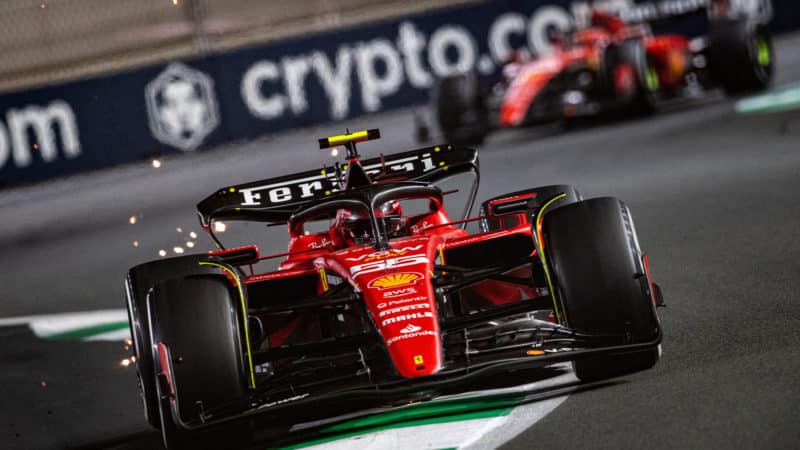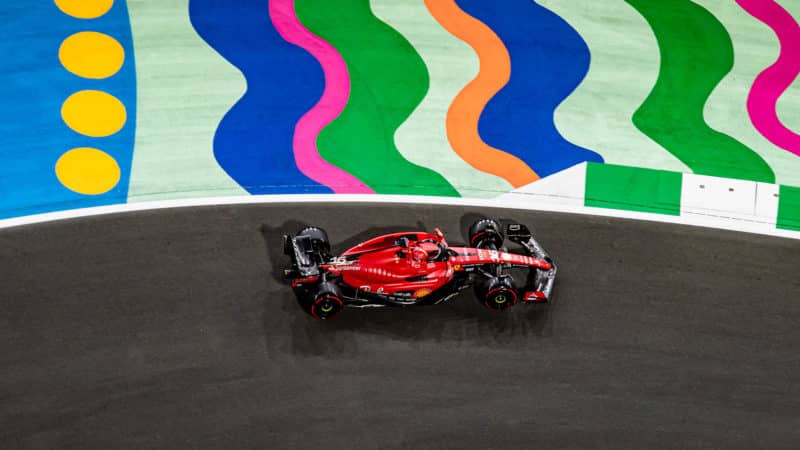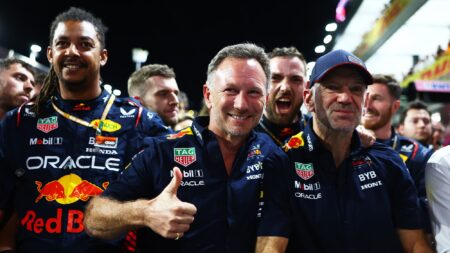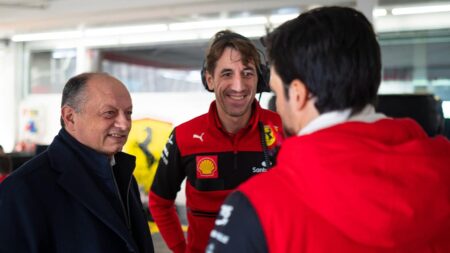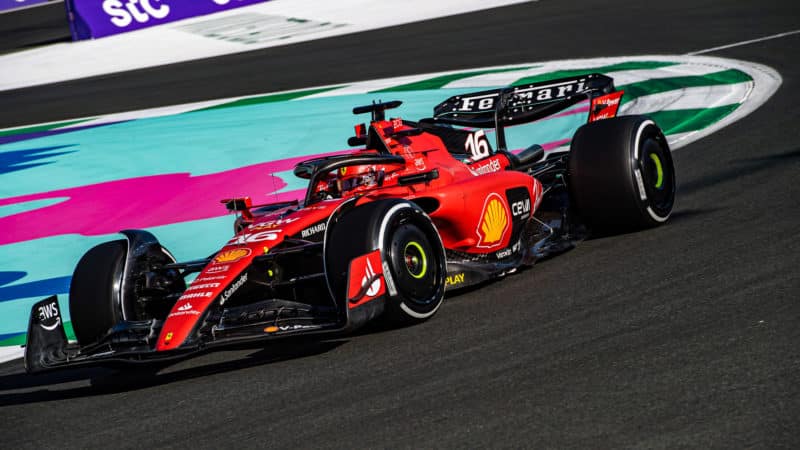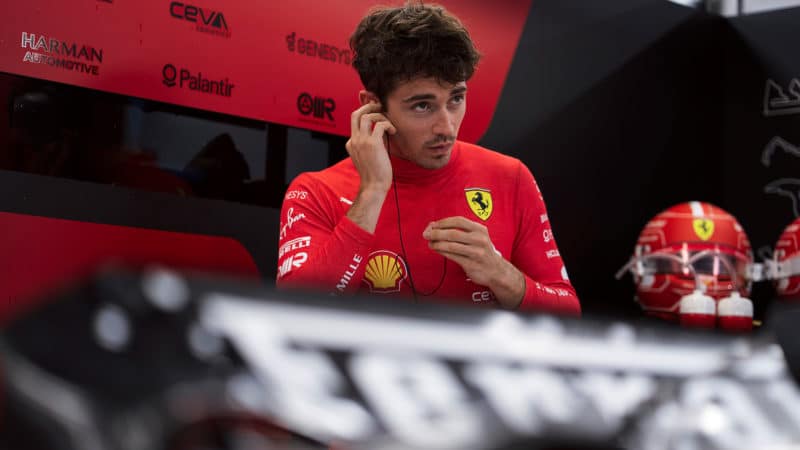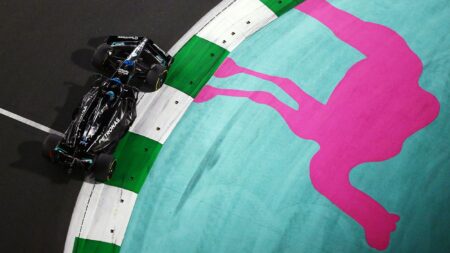He initially made good progress on the soft tyre but when, like his team-mate, he went to hards for the second half, both Ferraris faded away as they simply didn’t work on the least grippy compound.
People were sceptical when new team boss Fred Vasseur suggested in Bahrain that Ferrari’s main issue was set-up rather than anything fundamental, but he has a point. You have to have a pretty good car to have outrun Aston and Mercedes and everyone else in qualifying at two very different venues.
It’s interesting to note that Ferrari has addressed an issue that bugged it last year, and found some straightline speed that will help the drivers in race conditions.
“The first stint went pretty well and then we completely lost ground”
Has some of that been achieved at the expense of cornering performance that might have manifested itself on the harder tyres in Sunday’s race? That is probably one of the issues the team has to dig into this week.
“It’s early stages to have a clear picture about the season,” Vasseur said on Sunday evening. “But so far, I think that the pace was decent yesterday because we made a step forward and we opened the gap compared to Mercedes and Aston, at least in quali with Charles: we were three- or four-tenths faster than Aston Martin.
“The first stint went pretty well also, Charles had a good comeback, but he was on the soft. Carlos was on a decent pace on the first stint with the medium compared to others.
“And then we completely lost ground. It’s where we have to understand the main issue and if we have some improvement to do — it’s clearly on the management of the different compounds over the weekend.”
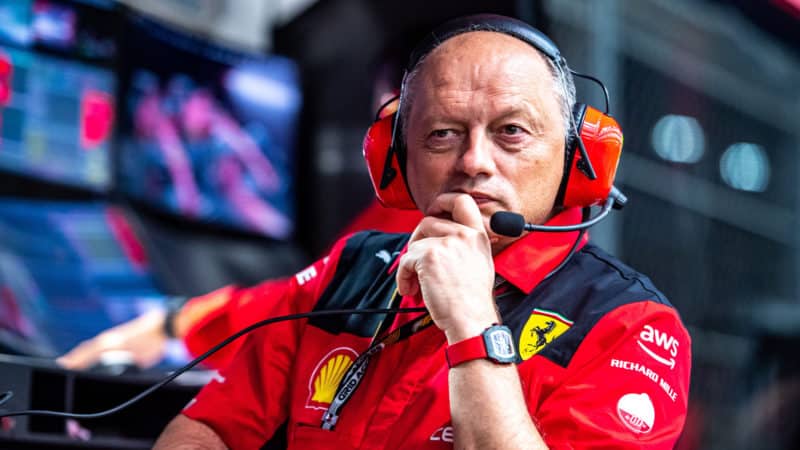
Vasseur saw his cars drop behind Aston Martin and Mercedes as the race went on
Ferrari
Vasseur was keen to stress that it’s not as bad as that disappointing final classification might have suggested.
“I think we have also to stay calm,” he said. “It’s not that everything is going wrong. I think the issue today was much more about the pace with the hard tyre rather than something else.
“My first feeling from the pitwall is that we were able to extract the maximum potential of the car on some occasions, with the soft on one lap yesterday, or perhaps soft and medium today for the first part of the race.
“We struggled much more with the hard. I don’t know if it’s linked to the track temperature at the end when the temperature starts to go down or it’s relative to the compound. But from my point of view it’s crystal clear that we had a good moment, a good journey into the weekend. And a very poor one at the end of the race.”
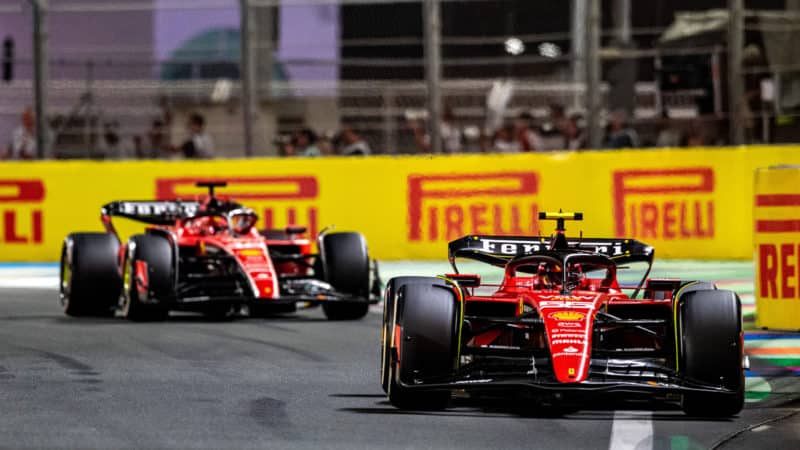
Pace dropped away when Sainz and Leclerc fitted hard tyres
Ferrari
Of course tyre management, and especially getting the right downforce level for a given track and balancing speed on the straights against how the tyres are impacted in the corners, is no small matter – it cuts right to the heart of how modern F1 works.
However that can be addressed with homework and experimentation, and Ferrari could well hit the sweet spot on Friday in Melbourne. The point is that making a car that is inherently not fast enough quicker would be a much bigger task.
“The performance in our business, it’s always coming from different pillars,” said Vasseur. “It’s never one thing going well or wrong. And it’s not because that we had a poor stint with the hard that we have to stop the development on the aero, on the suspension, on the engine. We will continue to do our best on every single area of the performance.”
